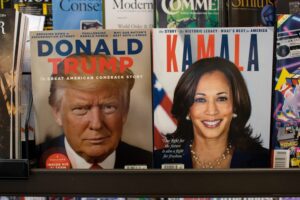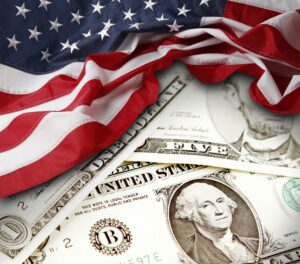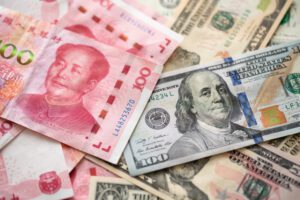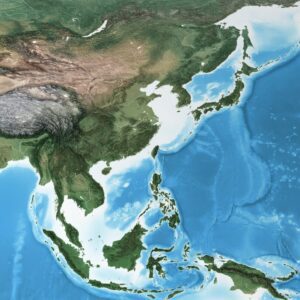The Future of U.S.-EU Trade and Investment
On October 31, WITA hosted an armchair discussion with the Ambassador of the Delegation of the European Union to the United States, Jovita Neliupšienė, and Ambassador Susan Schwab, the former United States Trade Representative. The Ambassadors discussed trade policy priorities of the new European Commission as it prepares to take office later this year, and the European Union’s trade and investment footprint in the United States.
Following the discussion between the Ambassadors, an expert panel discussed trade relations between the U.S. and EU, and the possibility for deepening ties between the world’s first and third largest economies.
Armchair Discussion Featuring:
Ambassador Susan C. Schwab, Strategic Advisor, Mayer Brown; former United States Trade Representative
Ambassador Jovita Neliupšienė, Delegation of the European Union to the United States; former Vice Minister, Ministry of Foreign Affairs of Lithuania
Panel Discussion Featuring:
Marco Margheri, Head of US Relations, Eni; Chairman, Eni New Energies US Inc.
Daniel Mullaney, Non-Resident Senior Fellow, Atlantic Council; former Assistant U.S. Trade Representative for Europe and the Middle East
Jonathan Samford, Incoming President & CEO, Global Business Alliance
Lisa Schroeter, Global Director of Trade & Investment Policy, Dow
Moderator: Penny Naas, Lead, GMF Allied Competitiveness, German Marshall Fund
|
Trump or Harris: To Challenge China, the Next
President Should Fix Trade
In the September presidential debate, former President Donald Trump and current Vice President Kamala Harris had sharply contrasting views on issues ranging from energy, immigration, and foreign policy toward China and the Middle East.
Yet, both agreed that tariffs were useful for the sake of US foreign policy.
The debate started with tariffs, and the two candidates went back and forth on the likelihood that the new tariffs would cause inflation. By the end of the debate they returned to their discussion on tariffs, where they disagreed on which sectors they should impose tariffs and which countries should be targeted, but agreed that tariffs were useful. Regardless of the detrimental consequence of tariffs, including inflation, the candidates emphasized the need to impose them to protect critical sectors and spur domestic manufacturing.
The debate clearly demonstrated a new era in the United States, where the two parties are recalibrating the balance between national security and economics.
Biden’s trade war and Trump’s
The United States has a growing list of grievances about Beijing’s mercantilist practices. These include widespread market-access restrictions, from equity caps on investment to regulatory harassment; pervasive subsidies directed at national champions that tilt the competitive playing field against foreign firms in China and in third markets; and widespread forced technology transfer and intellectual property theft. To protect domestic industries vital to national security and incentivize China to change its practices, both the Trump and Biden administrations have imposed tariffs on Chinese products.
In March 2018 President Trump announced the administration would impose a 25% tariff on imported steel and a 10% tariff on imported aluminum. Following the announcement, the Trump administration imposed several rounds of tariffs on steel, aluminum, washing machines, solar panels, and goods from China, impacting more than $380 billion worth of trade at the time of implementation and amounting to a tax increase of nearly $80 billion.
President Biden said in a 2019 speech: “President Trump may think he’s being tough on China, but all he has delivered is more pain for American farmers, manufacturers, and consumers.” Yet, the Biden administration has largely upheld existing tariffs, with some exceptions. These include suspending certain tariffs on European Union imports, replacing tariffs with tariff-rate quotas (TRQs) on steel and aluminum from the EU and UK, as well as steel from Japan, and allowing tariffs on washing machines to expire after a two-year extension. In May 2024, the Biden administration announced additional tariffs on $18 billion of Chinese goods, resulting in a tax increase of $3.6 billion.
President Biden’s trade policy differs from the former president’s in that he seeks to increase production and jobs in a select group of emerging high-tech industries. Additionally, he has tightened trade restrictions with China under the “Small Yard, High Fence” approach, limiting the sale of American technology to Beijing while directing federal subsidies to US manufacturers competing with Chinese manufacturers. Another key difference in President Biden’s trade policy is that his strategy relies on bringing international allies together to counter China through a mix of domestic incentives and potentially coordinated tariffs on Chinese goods.
|
Whoever Wins the US Election Won’t Change Asia’s Economic Strategies Towards America
|
The triumph of Donald Trump in the 2016 US presidential election fundamentally changed how the economic policy strategists in East Asia and the Pacific must think about the US role in the global trade regime. They had to get used to the idea that the new regional economic order would have to be founded on the assumption that the United States will not be a partner in East Asian regionalism or show leadership on trade and global economic governance, for at least the next few presidential terms. Even if the United States manages to avoid the calamity — for its democratic institutions, social cohesion and international standing — of a second Trump term after 5 November 2024, this remains the stark reality. US Vice President Kamala Harris and the Democrats reject the worst excesses of Trumpian mercantilism, which now includes a promise to levy blanket tariffs of 10 to 20 per cent on all imports — with a 60 per cent rate on imports from China — though they too promise episodic tariffs on China. Harris and her party may be not as radicalised against the basic principles of economics as Trumpian Republicans. But with their focus on ‘middle class economic diplomacy’, they have no intellectual counter-narrative about the way in which America’s slide into isolationism and protectionism will undermine its economic strength and political power. And their instinct is to succumb to the political incentives to play on Trump’s policy turf. The ‘America First’ trade policy has won a strategic victory over the past eight years, shifting the US bipartisan consensus towards the idea that globalisation was a lousy deal for Americans. Under the Biden administration, Trump’s tariffs on China and Washington’s undermining of the World Trade Organization (WTO) dragged on. US abuse of the General Agreement on Tariffs and Trade’s security exception to force decoupling from China in purportedly ‘strategic’ industries also became more deeply entrenched, and its case for WTO reform remained unprosecuted. There is no reason to expect this consensus won’t stick for years to come, even if Trump loses the election. If Harris becomes president, she will be playing political defence from day one. She will face a polarised electorate, a divisively partisan Supreme Court and possibly a recalcitrant Republican-controlled Congress — all while looking towards a re-election campaign that will depend on shoring up support in states hit hard by deindustrialisation. 10/27/2024 | Peter Drysdale & Liam Gammon | East Asia Forum |
|
 |
This paper explores potential trade policy directions for the United States under either a second Trump administration or a Harris Presidency. Under Trump, trade policy would likely be more aggressive, centred on tariffs, isolationism, and protectionism. Trump views trade as a zero sum game and would likely escalate measures against China and allies like the EU to reduce the US trade deficit. His administration would prioritise domestic manufacturing and autarky, viewing trade as a national security and geopolitical leverage tool.
In contrast, Kamala Harris is not expected to prioritise trade, at least in the early part of her Presidency. Her approach would largely continue the Biden administration’s “worker-centric” trade policies, emphasising sustainable and fair trade practices, with a focus on human rights, labour, and environmental standards. Harris would likely pursue strategic partnerships and multilateral frameworks, though she would also be willing to use tariffs selectively, particularly against China, to safeguard American jobs and industries, thus also not complying with multilateral rules.
Both candidates share concerns over avoiding China to become the new superpower and protecting the US economy, although Trump would likely pursue a more radical decoupling strategy. Neither administration is expected to prioritise free trade agreements, and multilateral engagement, especially with the World Trade Organisation (WTO), would be deprioritised under both candidates.
The European Union (EU) must prepare for an increasingly inward-looking US trade policy, regardless of the outcome. Under Trump, EU-US relations would likely face heightened tensions, with tariffs, trade disputes and a reshuffling of value chains significantly affecting EU exports and economic growth. A Harris Presidency would offer more stability, but EU-US relations may still be marked by cautious cooperation, particularly in addressing global trade challenges posed by China.
Key recommendations for the EU include balancing short-term and long-term priorities: deepening the EU cohesion allowing it to respond to unilateral aggressive initiatives, while deepening transatlantic cooperation through platforms like the Trade and Technology Council (TTC), strengthening ties with like-minded democracies, and adopting a unified approach to counterbalance US pressure. The EU should also continue its leadership in modernising global trade rules through the WTO.
Read the Full Policy Paper Here
10/22/2024 | Micol Bertolini & Elvire Fabry | Jacques Delors Institute
|
 |
Over the past few years, the United States has made the most significant change in its approach to trade in generations. Starting in the 1970s, trade policy was focused on neoliberal priorities such as promoting efficiency through tariff and cost reductions and limiting the space for purely national regulation of commerce. This was done with an eye toward benefiting multinational corporations and with the view that trade was primarily a tool for advancing the foreign policy interests of the US (and its image as a global leader). Other goals, such as the quality of domestic jobs or environmental sustainability, were an afterthought. In recent years, however, a new set of values has started to guide US engagement with the global economy, with working class power, climate sustainability, and supply chain resilience at the core of a new approach to global leadership.
While evidence of this new approach can be found throughout the executive branch, it is perhaps most clearly evidenced in the Office of the US Trade Representative (USTR) under the leadership of Ambassador Katherine Tai. Since assuming office with the unanimous, bipartisan support of the US Senate in March 2021, Tai and her agency have laid out an ambitious new US trade policy agenda—one that has started to bear fruit for workers, industries, and the environment.
To take stock of these changes, the Roosevelt Institute convened a study commission of scholars, former policymakers, and labor leaders. Some are longtime trade experts, others economic policy generalists with a bird’s eye view of how trade connects to other economic policies. We sought to better understand how trade policy got to where it is and to sketch out ways this trade agenda could be refined and expanded by future policymakers. This stocktaking report summarizes our takeaways from the commission. However, nothing here should be taken as consensus recommendations or the group’s full range of ideas for the future of trade policy. Rather, the report represents our attempts to identify—through a group-informed process—fruitful areas for analysis and action in the months and years ahead.
The report is divided into three sections based on the following themes:
- Producing what matters: Trade policy should be in service of the emerging theory of economic growth, rather than pursued for its own sake. Future trade negotiations should focus on problem-solving around production challenges in specific sectors, with the goal of deepening competition and promoting sustainable economic development at home and abroad.
- Consuming with purpose: Past trade policies have been sold through emphasizing their benefits to US consumers in the form of lower prices. The new strategy organizes American consumers to use their collective strength as a $3.8 trillion import market (the world’s largest) to push countries, producers, and importers to follow high-road practices. In other words, access to the US market is a privilege, not a right, and “consumption power” through trade enforcement is how the privilege is managed.
- Personnel is policy: Who serves in government and who government consults is vital to good policy outcomes. Trade policymakers, career staff, and expert advisors should be willing and able to build on this new trade policy model and should reflect America’s full diversity.
10/20/2024 | Todd N. Tucker | Roosevelt Institute





